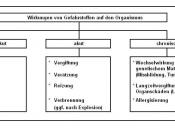Through the years, the government of the United States has been vigilant in protecting the human rights of workers. Many laws have been enacted to ensure the safety of workers and to give them some redress in cases of injuries. The Occupational Safety and Health Act (OSHA) enacted in 1970 and the Family Medical Leave Act (FMLA) signed into law by President Clinton in 1993, have proven to be two far reaching pieces of legislation that have a profound impact on the workforce today. Though these laws were introduced at different times, they exemplify the United States government's commitment to the protection of workers and their families. This paper illustrates the application and implication of the OSHA and the FMLA. Issues of employee safety, health, and welfare will be evaluated. The responsibilities of the employer under these laws and the protection afforded for the employee will be addressed.
The dynamic American workforce continues to experience a myriad of rapid and multifaceted changes.
Women now comprise roughly one-half of the employed and the baby boomers are getting older. With this new employment landscape new issues have arisen. Many of the women entering the workforce are of child bearing age or are single mothers with young children. A balance needs to be struck between work life and family life. An aging population also has left many workers with the burden of caring for elderly and disabled parents. The Family and Medical Leave Act (FMLA) enacted in 1993 by President Clinton, seeks to address some of the issues facing employees. Included is the need for medical insurance coverage while off work because of illness or maternity, preservation of positions so that employees can return to work at the end of their leave, and assurance that employees would have adequate time off to rehabilitate.


